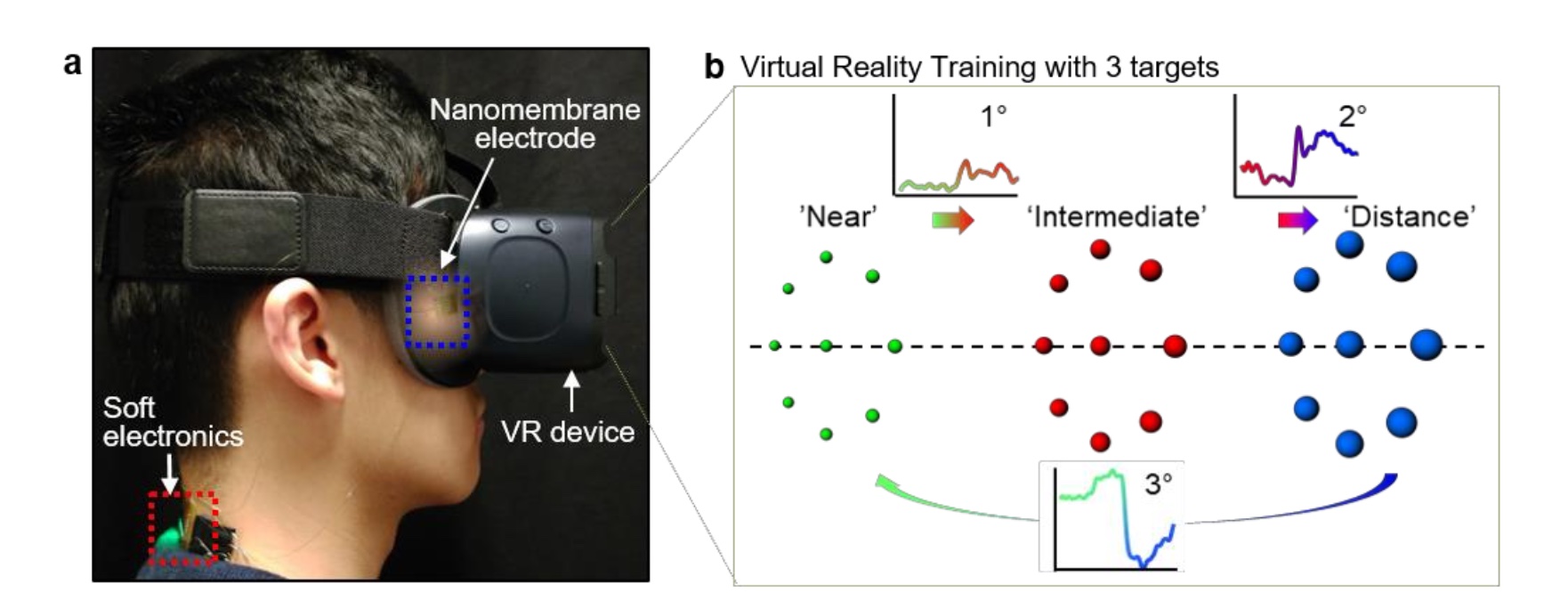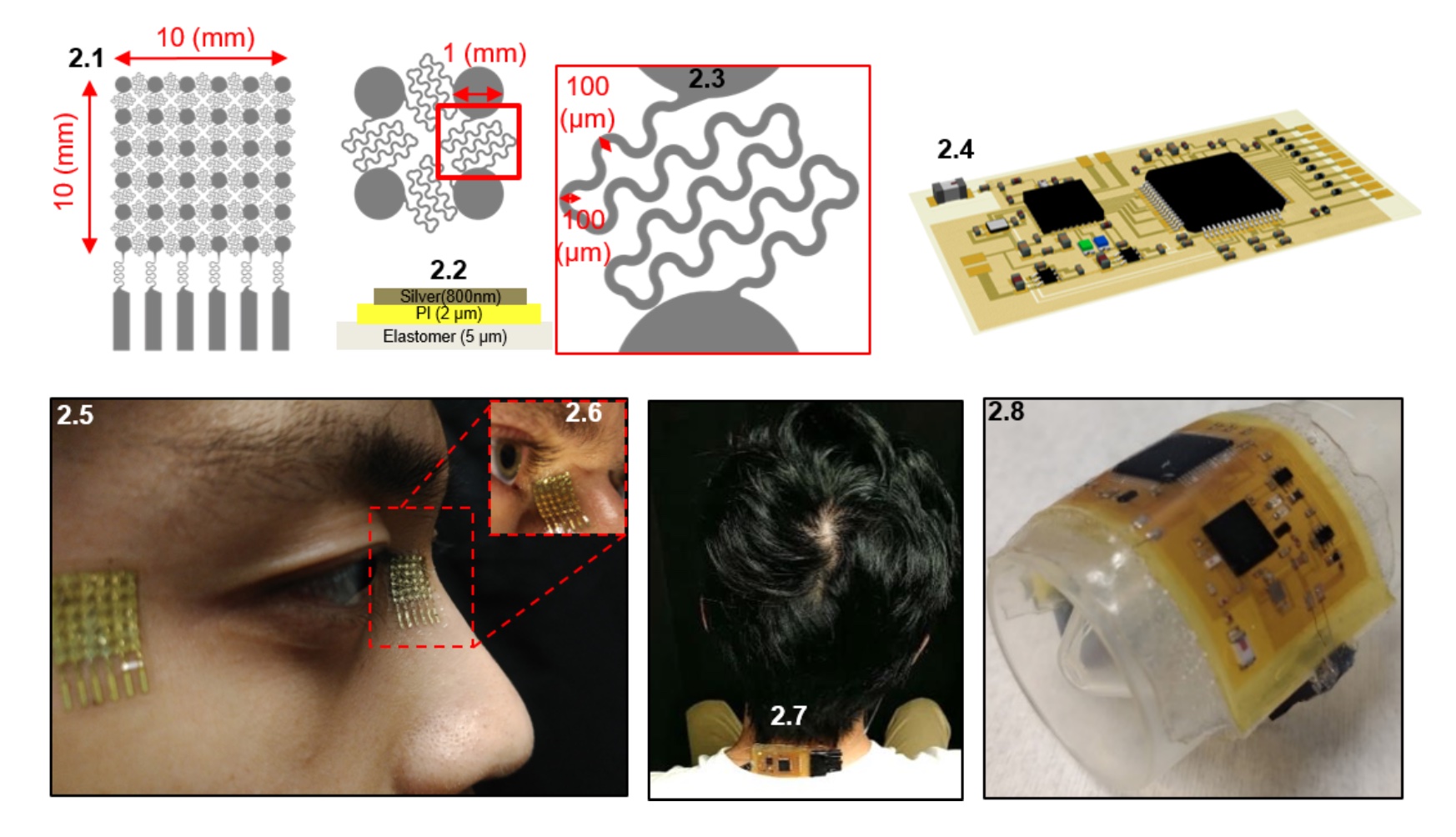Ocular disorders are increasingly prevalent in the smartphone era as more people use their devices at close range for extended periods. The problem is of particular concern for young users who are exposed to excessive use of smart devices at an early age. Common ocular disorders, including convergence insufficiency (CI) and strabismus, cause debilitating headaches, blurred vision, fatigue, and attention loss. For decades, treatment options have been limited to invasive surgery or clinic-based vision therapy. Current home-based vision therapy often uses outdated techniques and has diminishing success rates over time. To reduce outpatient visits, a usable and effective home-based visual therapy is needed.
Portable Ocular Electronics Offers Complete Home-Based Therapy
The solution is the first fully portable and wireless ocular electronic system with real-time classification of eye vergence motions. Patients will benefit from stretchable hybrid electronics made of ultrathin, biocompatible materials. The combination of skin-conformal sensors in a virtual reality (VR) environment with a custom-designed application provides an effective, home-based visual therapy program. The integrated wearable system enables quantitative analyses of vergence motions, which is a significant advantage over outdated home therapy techniques. The wireless ocular electronics with a data classification algorithm provides a high-fidelity, real-time detection and feedback of eye vergence.
- All-in-one solution: This fully wearable and wireless soft electronic system is highly sensitive to tracking eye movements to provide effective home-based vision therapy.
- Custom fit: A skin-conformal, stretchable electrode can be fabricated into a small form factor to compress under a VR headset and conform to nose/surrounding eye area.
- Highly accurate: Analytical and computational study of a data classification algorithm offers real-time detection and classification of ocular motions.
- Portable: The system offers a significant advantage over bulky systems limited in flexibility, allowing for in-home use.
- VR environment: Running a VR system on a smartphone can create “virtual therapies” that can be used anywhere anytime.
- Home-based ocular training and therapeutic system to treat ocular disorders, such as strabismus and CI
- Diagnosis of neurodegenerative diseases and childhood developmental disorders (e.g., Parkinson’s, spinocerebellar ataxia type 3 and type 6) to improve quality of life through treatment of ocular conditions

Overview of a soft, wireless ocular electronic system that integrates a virtual reality (VR) environment for home-based therapeutics of eye disorders. (a) A portable, wearable system for vergence detection via nanomembrane electrodes and soft circuit and relevant therapeutics with a VR system. (b) VR therapy environment that simulates continuous movements of multiple objects in three varying depths of near, intermediate, and distance that corresponds to 1°, 2°, and 3° of eye motions.

The overall skintronic setup with the CAD design for the skin-electrode, 2.1, and the dimensions of the skin-electrode, 2.2-3. The overall CAD design of the skintronic device is also shown in 2.4. The skin-electrode and skintronic device is attached to the face for recordings, 2.5, which can be shown to conform to the nose, 2.6, and the back of the neck, 2.7. It also conforms 360° on a cylindrical surface.
